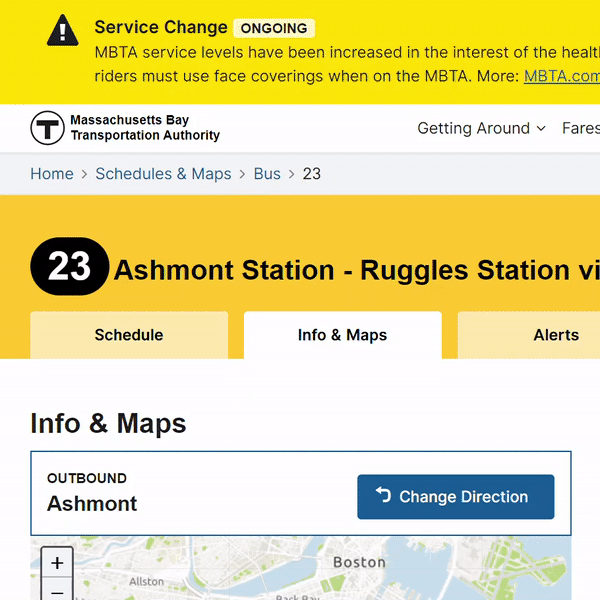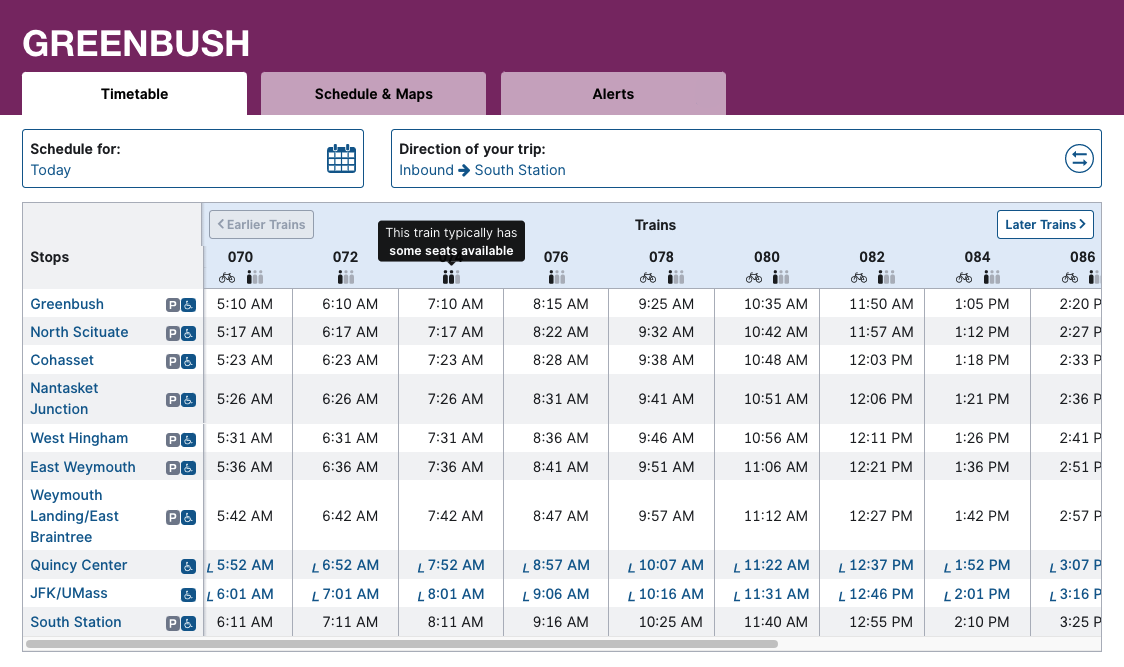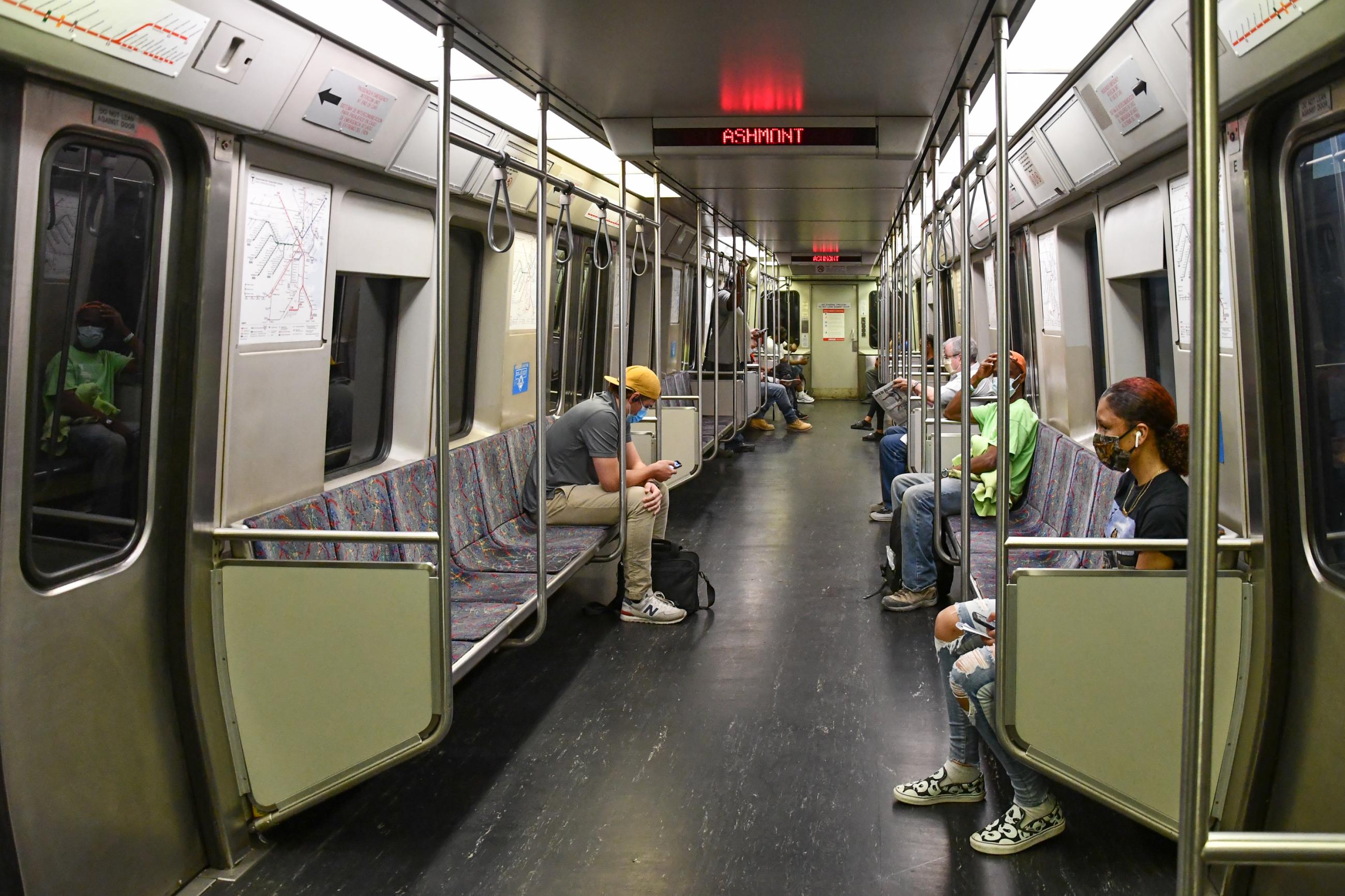Crowding Information for Riders

To keep riders informed during the COVID-19 pandemic and beyond, we began piloting crowding information for bus and subway. As of May 29, 2021, we’ve updated our crowding data to reflect the statewide reopening.
Crowding information is available for two modes of transportation:
- Real-time crowding for buses on our website, E ink screens, and in the Transit app
- Recent seat availability trends on the Commuter Rail, represented by icons at the top of a line's timetable
We’ve shifted our crowding definitions to reflect pre-pandemic levels. Crowding data is now based on the thresholds in our service delivery policy.
We describe crowding in three categories: Not crowded, Some crowding, and Crowded:
- Not crowded: Fewer than 50% of seats are occupied
- Some crowding: Around 50% of seats are occupied
- Crowded: 25% more than the seated capacity
Percentages are based on the specific capacity of the vehicle. For example, a standard 40-foot bus with 37 seats would be considered crowded at 46 riders. A 60-foot bus with 57 seats would be considered crowded at 71 riders.
We'll continue to monitor usage and rider feedback, and we may make further adjustments as necessary.
Commuter Rail seat availability is regularly updated to reflect a trip’s typical ridership based on automated and conductor data from the past 14-30 days.
Current seat availability thresholds are:
- Many Seats Available: Typically more than 66% of seats are available and distancing is possible (~0-2 people per row)
- Some Seats Available: Typically more than 33% of seats remain available and distancing may be possible (~2-3 people per row)
- Few Seats Available: Typically fewer than 33% of seats available and distancing is unlikely (~3+ people per row)
Bus Real-time Crowding
Real-time crowding information is available all day, every day for most MBTA bus routes. For each route, our Customer Technology team verifies the accuracy of crowding information through manual passenger counts.
For some routes, crowding information may not be available yet, or may only be available on certain days or times:
Routes 4, 39, 55, 57, 59, 60, 65, 66, 90, 94, 95, 96, 97, 100, 105, 106, 108, 131, 134, 136, 137, 193, 354, 411, 430, 501, 504, 553, 554, 556, 558, CT2, and CT3
Routes 71 and 73
Routes 34 and 34E
How to Use Bus Crowding Information
Crowding information is now available on our website, on certain digital signs, and within the Transit app.
Visit the schedule page for any route the information is available for, and then tap or click the vehicle icon on the map or the line diagram.

You might also see E Ink screens that predict crowding levels on the buses scheduled to arrive.
Commuter Rail Seat Availability Trends
Commuter Rail crowding levels indicate the seat availability across all coaches on each train. This information is based on a combination of automated counts via on board sensors and manual counts by our crew members.
To reflect a trip’s typical crowding, these levels are constantly updated and based on a trip’s median seat availability within a rolling 14 – 30 day period. Some coaches may be more crowded than others; if your coach appears more crowded than typical, consider relocating to another open coach on the train.
Due to the nature of public transportation, trains may operate at a lighter or fuller capacity than typical on any given day.
How to Use Commuter Rail Seat Availability Trends

Seat availability information is available on all Commuter Rail lines, represented by icons at the top of a line’s timetable.
What’s Next
Bus
Real-time crowding is a new data source we developed in direct response to the COVID-19 pandemic. Crowding data is now available on the majority of MBTA bus routes.
Subway and Commuter Rail
Live crowding data for the subway and Commuter Rail isn’t available yet. Additionally, because our data is based on fare card taps at station faregates, crowding information is not available for Green Line and Mattapan Trolley.
Contact Us
Tell us what you think! Send your questions or feedback to our Customer Support team. The data is also available to third-party app developers in our official APIs.
Coronavirus Updates
Get the latest updates on service changes related to COVID-19.
Related Projects
Coronavirus Updates
Get the latest updates on service changes related to COVID-19.

